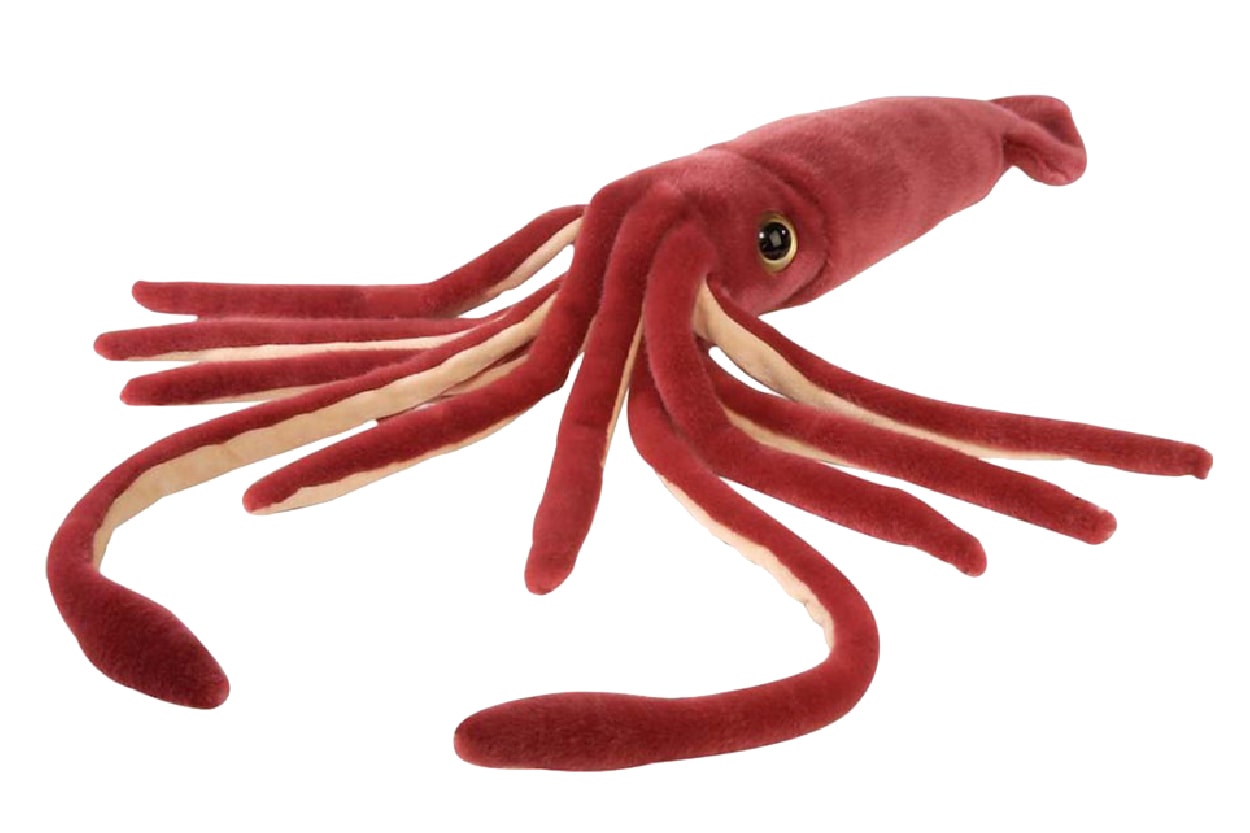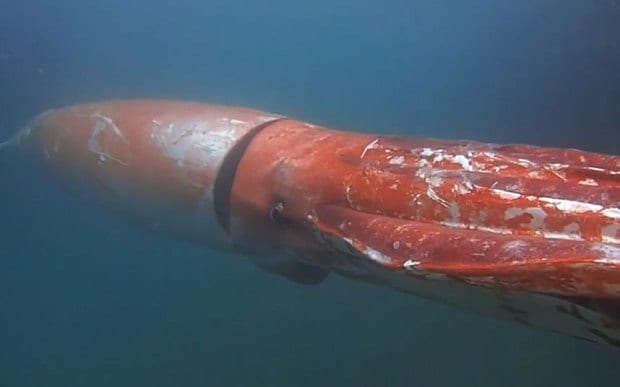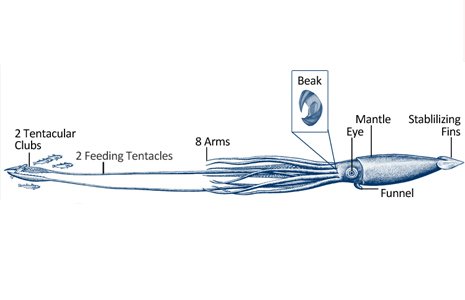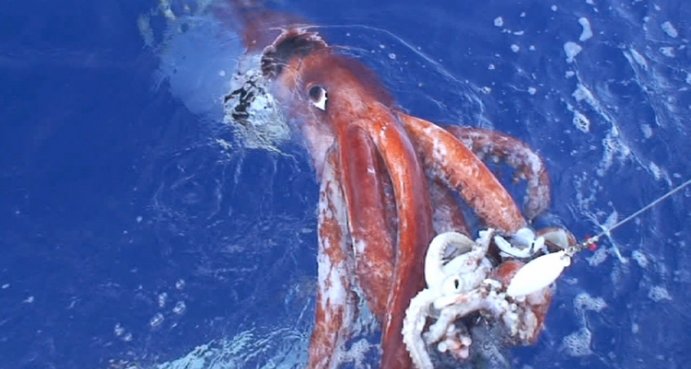Giant Squid

Description
This is the Giant Squid! These magnificent creatures lurk in the deep oceans, where they prey on other squids and even whales (Yes! Whales!). Unlike their distant cephalopod cousin, the octopus, these suckers have two specialized tentacles equipped with sharp toothed suckers that helps them grab and latch onto large surfaces. These creatures are not endangered, but to be fair it is actually hard to find more about these creatures due to the high pressured depths of the ocean and have to mainly rely on their carcasses found on beaches and stomachs. They also have quite a short life expectancy of one to two years. A combination of short life expectancy and increases in predation on these creatures can potentially endanger the Giant Squid. Your donation will help us find more about these creatures and build better ways to access and help these larger-than-life toothed-tentacle creatures of the deep!
Additional Information

Taxonomy
- Kingdom: Animalia
- Phylum: Mollusca
- Class: Cephalopoda
- Order: Teuthida
- Genus: Architeuthis
- Species: Not Specified
Scientific Name: Architeuthis (species) | Common Name: Giant Squid
Biology
The Giant Squid looks like they came straight from the mythological books about the “Kraken”. Their sheer size is enough to terrify divers and explorers of the deep for both humans and underwater dwellers. To start, their eyeballs are huge! The have the largest eyeballs in all living creatures in which are specialized to let them see in the cold dark depths of the deep ocean. According to National Geographic, the largest Giant Squid captured was 59 feet, which should put the eyeball into perspective. Also, just like much of the cephalopods, they are invertebrates (no bones).
The body of a Giant Squid has a similar body as the average squid. According to Clyde Roper and his team, they typically have a large head with tiny fins at the tip of their head that allows them counterbalance their weight in water. They have a funnel that allows them to propel underwater by sucking water into their body and then pushing it out of the funnel.
They have a total of 10 tentacles, eight of which are the typical shorter tentacles with suckers underneath them that helps the squid to move, navigate, grab onto objects and other creatures. However, they have two really long tentacles (sometimes just as long as the entire head of the squid) called “feeding tentacles”, which are specialized for reaching and grabbing. The suckers of these giant creatures have sharp “teeth” that allows them to hook onto their prey or rip them to shreds!
Just like the average octopus as well, these squids have a beak that allows the giant squid to gnaw on their food. Their tongues are also covered in sharp “teeth” to further help them rip their prey more into pieces.

Environment
The Giant Squid lives in the deepest and darkest levels of the oceans. They typically are found in several different oceans within the northern and southern regions. Most of them seem to reside around the peripherals of the Atlantic Ocean. Fish, shrimp and occasionally other squids and whales are the typical diet for these giant creatures.
How They Survive
These creatures seem to have less methods for survivability that their distance cousins, the octopus, but they are fine when it comes to surviving. Aside from their large body, they actually quite “squishy”, meaning they have small muscular power. That being said, they have multiple and specialized tentacles that help them capture their prey. They sometimes feed on small whales (whales!), by wrapping them in the confines of their tentacles, all of which suck and hook onto the skin of their prey. As mentioned above, they also use their jet propulsion power from their funnels to escape their preys quickly in a fight-or-flight response such as a fight with a sperm whale, one of their natural predators.
Predators and Vulnerability
One of the popular predators for the giant squid would be the sperm whale. Although we have not seen these two fight live, there is a typical hypothesis that the sperm whale would usually win, according to Clyde Roper and his team. Of course humans are also natural predators to these creatures. Maybe not a “giant” squid but calamari in general.

There’s actually very little knowledge about the Giant Squid because of the amount of resources and work needed to actually access these creatures. Because they live so deep underwater, we know very little about their population. Scientists and researchers often rely on external forms of learning about their lives, such as through washed up carcasses on the beach, body parts (tentacle pieces) from the stomachs of other marine animals that are easier to access (the sperm whale). However, from what we know so far, these creatures are actually not endangered, however, they are at risk of becoming one due to various factors such as their life expectancy as being too short (1 to 2 years), and the increase in predation for the squids.
By buying this Giant Squid stuffy, you’re actually helping us find better ways of accessing these magnificent creatures of the deep to find out more about their population. Your donations will help prevent these creatures from becoming endangered by finding more about them to increase their life expectancy and balancing the food chain!
For more details about the Giant Squid, see this video !